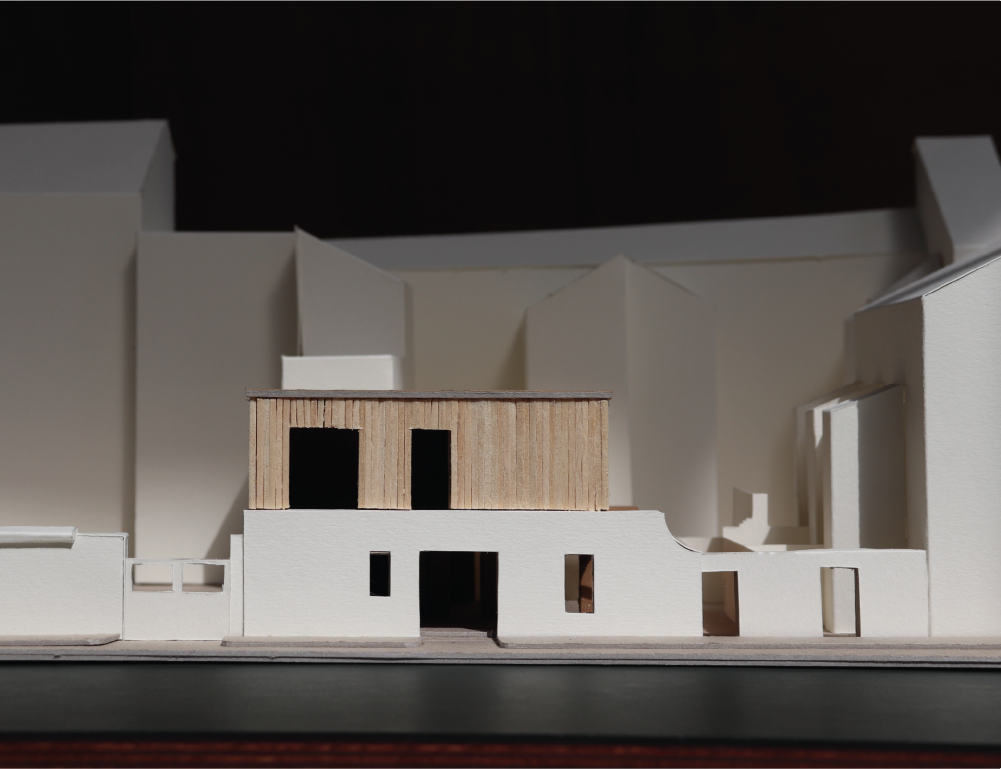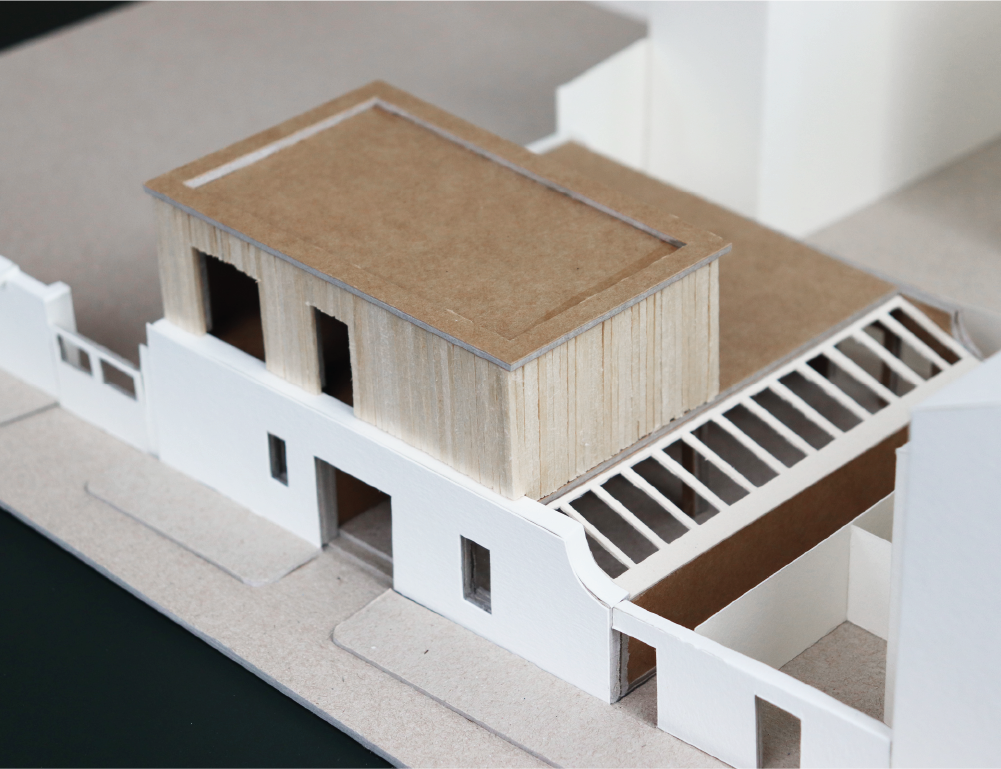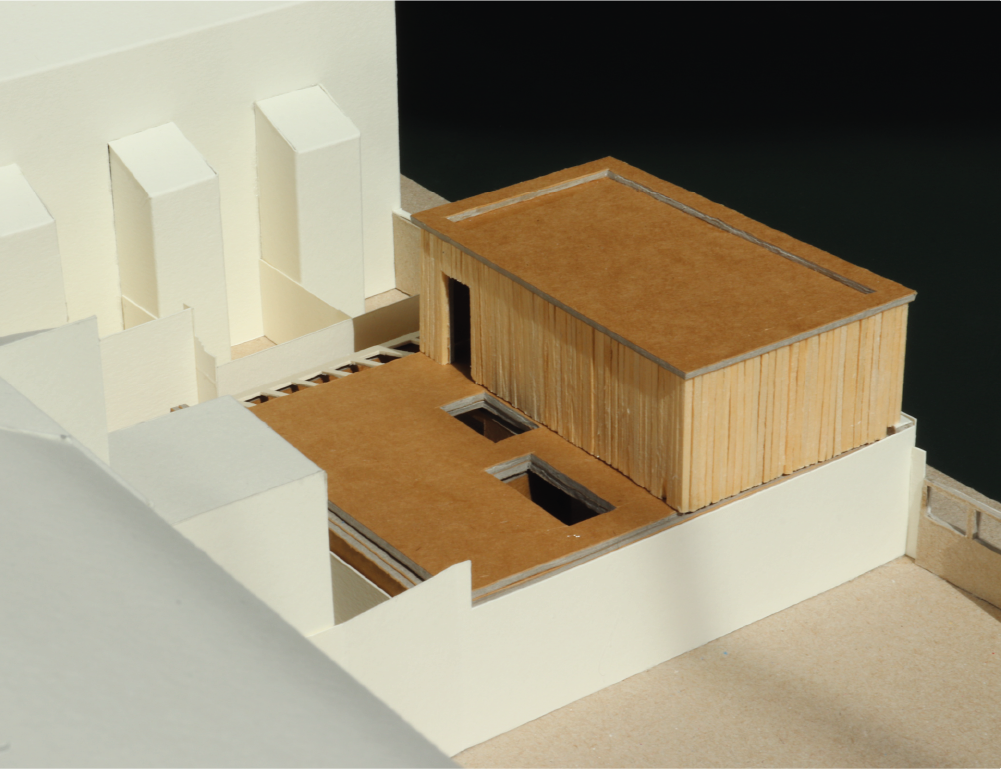Roscoe Street
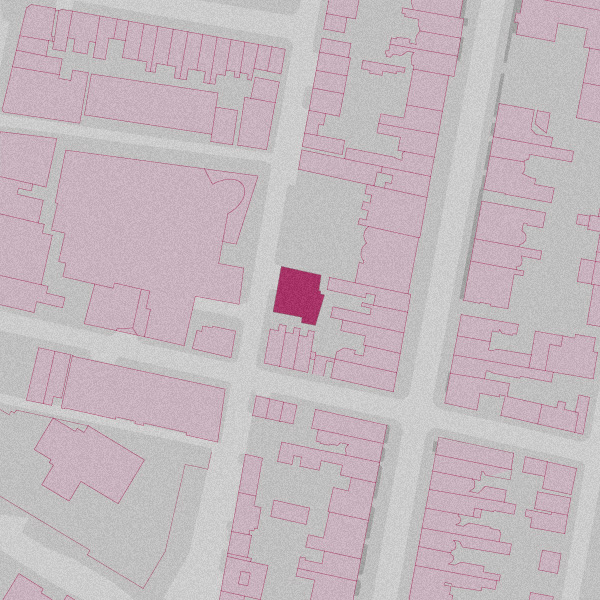
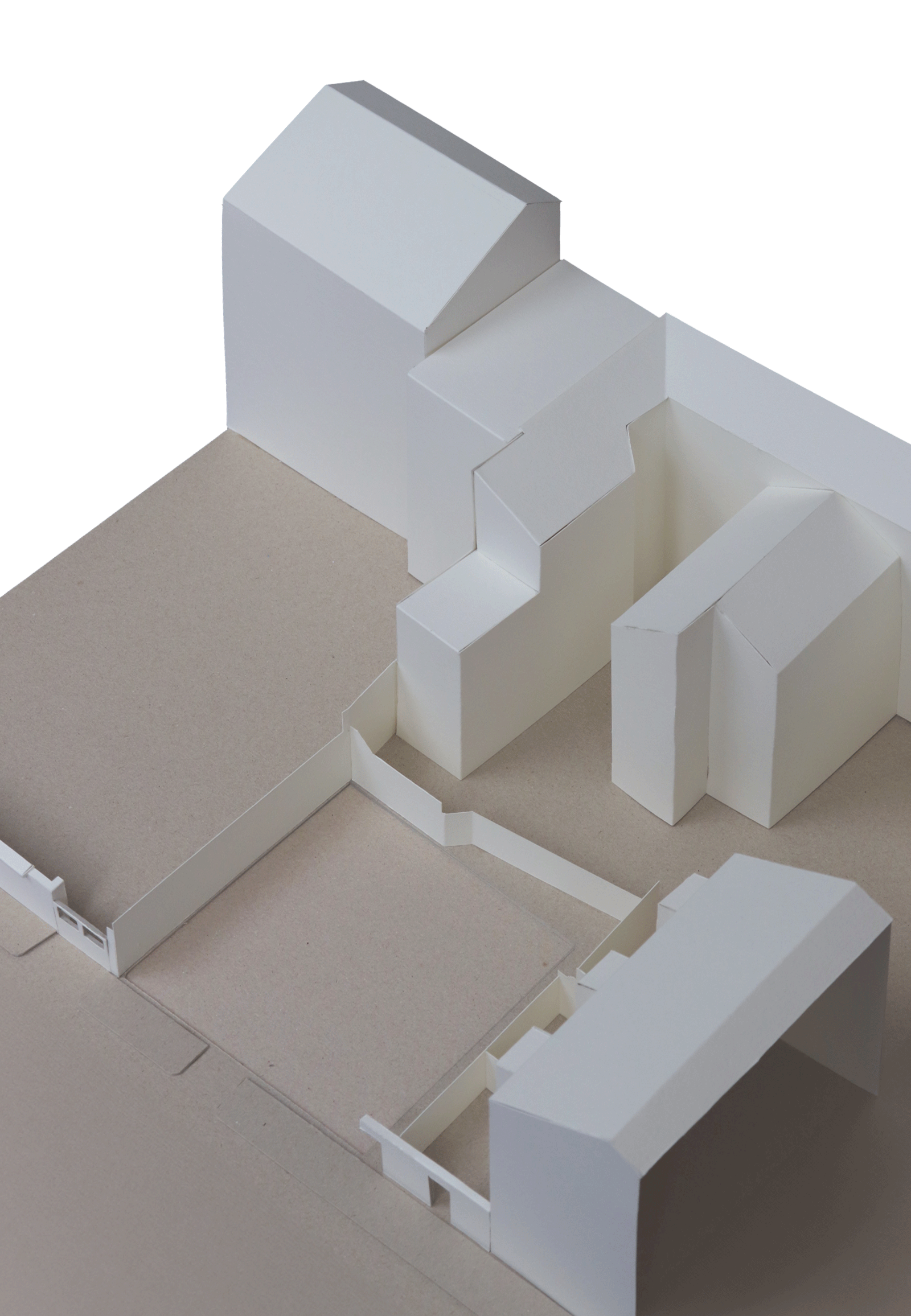
The site comprises vacant land, currently in use as a surface car park, located in the Rodney Street conservation area of Liverpool city centre. The surrounding properties to the east and south are early C19 townhouses, now configured in mixed commercial and residential arrangements. Opposite the site at Roscoe Street is a substantial sixth form college building.
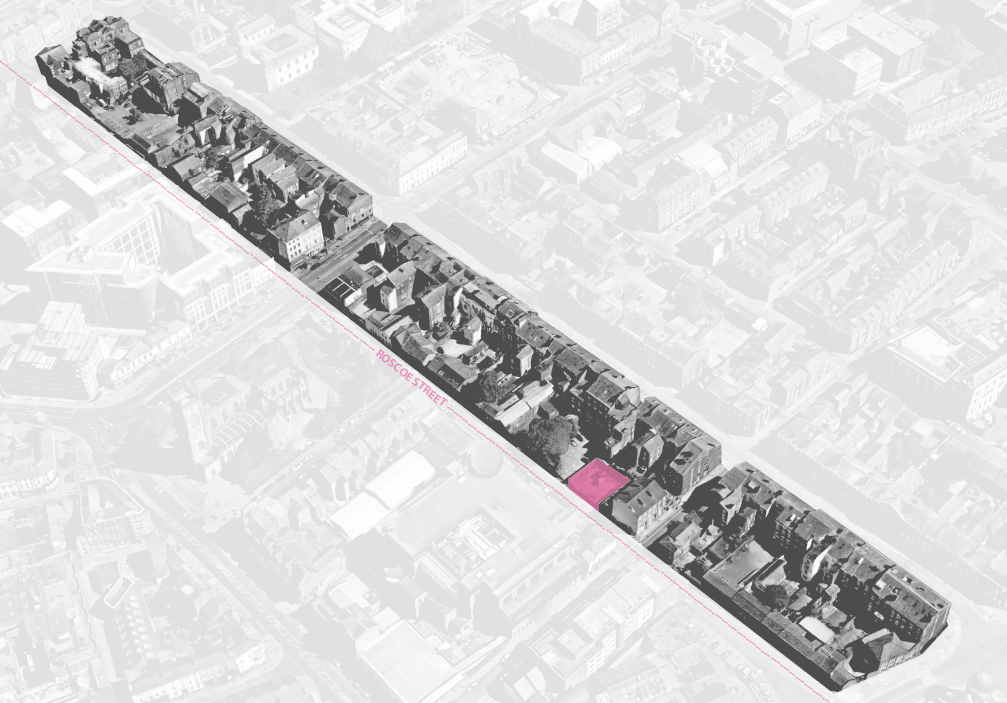
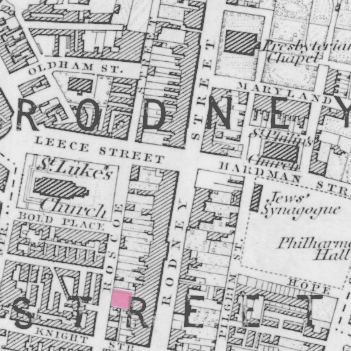
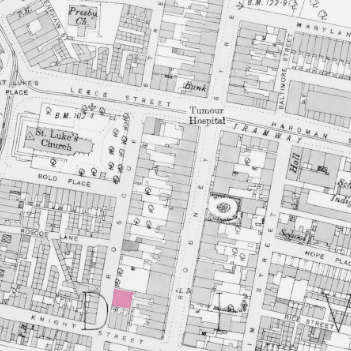
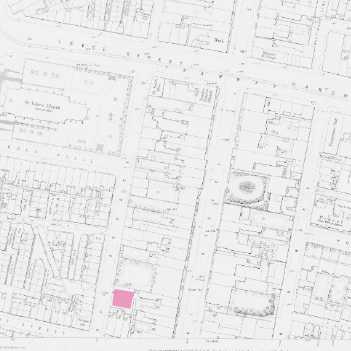
The project accumulates its form from a sequence of moves which in turn arise from a reading of the site and its context:
1. Accepting the importance of the conservation area. Acknowledging the condition of the masonry wall and the character of the site.
2. The natural restoration of the masonry boundary, reconnecting the site with the surviving context, making it continuous with its surroundings.
3. To celebrate and amplify the wall. The off-centre opening recalls a cartway, and the sandstone features reinforces the solidity of the wall.
4. To restore the built footprint to the site. The development represents a continuity with the historic development of the site.
5. Taking forward the layering of the scheme. The timber first floor extension conveys a lesser weight atop the masonry wall base.
The proposed development is anchored by the restored boundary wall, a masonry element which restores the continuity of the street scene in the conservation area setting. The wall is playfully scalloped as it meets the alleyway to the rear of the properties facing Knight Street, both to reflect the reduced mass at this side of the site, and as a call-and-response to the outrigger at the Grapes Public House, opposite.
The first floor element is a lightweight structure set back so as to preserve the amenity and outlook of the surrounding properties. The timber cladding both contrasts with the weight of the boundary wall and reflects the lightweight construction of the element.
The ground floor commercial unit roof is planted with a wildflower mix, increasing the site’s biodiversity and the outlook from surrounding properties. The planting mix will be specified to support native species and encourage, it is hoped, butterflies and grasshoppers to flourish.
